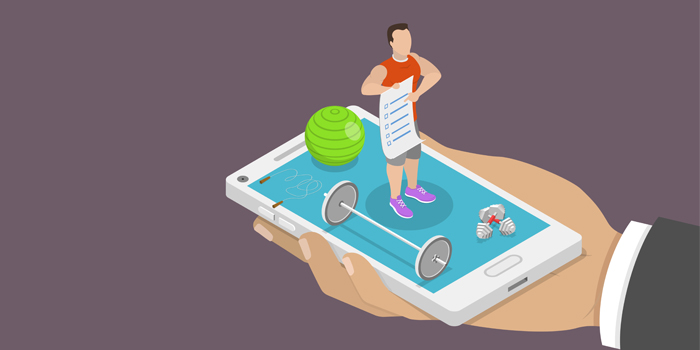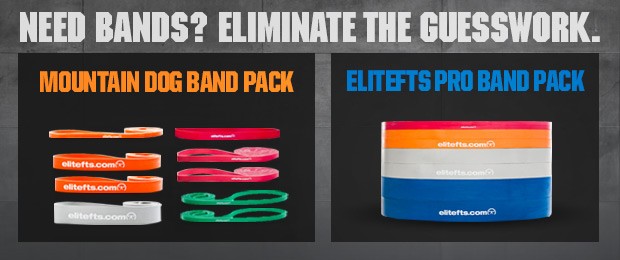
The coronavirus pandemic is causing widespread panic, social distancing and government-mandated gym closures.
What Is Two-Brain Recommending?
Pivot your clients to online training.
Set up three levels of service.
Level 1
Price this level to be slightly more expensive than your most popular group rate. (During COVID: Offer it at the same rate they’re paying but make sure they know it’s a more expensive service.)
Delivery: Group programming tailored to each client individually. Text twice per day, before and after the workout.
Tools: Text or email—or step up with a software platform like TrueCoach. But that’s optional. No video.
Level 2
Price this service about 33 percent more than the base package.
Delivery: Group programming tailored to each client individually, plus nutrition plans and tracking.
Tools: MyFitnessPal (here’s an article on how to use MyFitnessPal as a coach: Two-Brain Coaching). Text and email. No video other than that used to conduct nutrition meetings.
RECENT: Five Filters for Fitness Business Advice
Level 3
Price this level of service to be about twice as costly as the base package.
Delivery: Personalized programming and a personalized nutrition package, with regular online video goal reviews and nutrition plan updates. 2
Tools: MyFitnessPal, text, email, video for 1:1 calls.
Delivering Value
With each of these levels of service, the value is entirely in the 1:1 messaging with the client. The client must clearly understand how the program will move him or her toward goals.
General programming will not maintain its value for long. It’s a commodity for the online trainer.
The online training Two-Brain recommends is based on 1:1 contact with the clients on a regular basis. The personal contact is recommended to maintain engagement in the programming and with the gym.
The methodology Two-Brain refers to does not include Zoom videos and one-on-one video training; we acknowledge that others are “testing” some of these other forms of online training right now. We are collecting data as it becomes available on all methods and will share it.
If you are using any of these methods, you should consult with your insurance provider to determine if additional insurance is required for coverage.
Explaining the “Why”
Use your regular programming, but make sure your coaches can explain its value (the “why”) to every client depending on his or her goals.
Here’s how to do it:
Here’s an example of Josh Martin explaining a sample workout: Two-Brain Coaching Whiteboard Brief.
Where to Get Programming
Anywhere—make up your own or follow our example here: 31 At-Home Workouts.
How to Pivot to Online Programming
If you're in Growth Phase at Two-Brain Business, open up your Roadmap and go to Revenue Diversity, Milestone 10. (Need help? Ask your mentor.)
If you're in the Incubator, we'll teach you how to sell online training step by step in Growth Phase. But for now: If your gym is in danger of being shut down, you can offer to coach people online. This could even create a huge opportunity for you after this crisis ends!
First, keep taking your No-Sweat Intros. Offer people an option to do them over Skype or Zoom.
Second, if people are nervous about attending group classes, offer to deliver their workouts online. Tell them that this is a new premium service, but you'll provide it at the same price as their monthly membership for now.
For example, the three tiers of online coaching at Catalyst are:
$149 Base
$225 Core
$399 Max
For now, show these rates to your clients and say:
“We don’t want you to lose the buffer of health and immunity we’ve built together. These programs are more expensive than your current membership, but we’re going to give them to you for the rate you’re currently paying for as long as this crisis lasts.”
If they're doing workouts at home, you have to have 1:1 conversations with them. Don't just post “today's workout.” Actually take the time to email each client and say, “Here's how this will help you.”
You can use the same rationale with multiple clients or the same workout with different rationale.
For example, you could send a 4-round workout of 400m runs and 50 squats to a competitive sprinter and someone who wants to lose 30 pounds.
To the sprinter:
“I picked this workout to improve your ability to buffer lactic acid when your heart rate exceeds 165 BPM. Think about your final 100 m while you're doing it.”
To the weight-loss client:
“Today, we're going to alternate periods of localized fatigue with a more aerobic recovery phase. I want you to be able to metabolize fat during the workout. So do 4 the first run at a jog and note your time at the end. Try to keep that jog time within 20 percent of the first one if you can, but your priority is to do the squats unbroken.”
More variations are possible.
To the new person: “Our goal today is to keep moving. It's OK to slow down but try not to stop. I'd like you to record your split times each round and send them to me so we can analyze your performance. We'll pick the next few workouts based on those results.”
To the veteran:
“My goal for you today is to see how localized fatigue affects your general performance. Instead of being limited by hitting a high HR, I want to see what happens when lactic acid builds up. So there's a small mental component here, too. To help, please try to do all of the squats unbroken, hit the first run hard, and keep all your other run times within 20 percent of your fastest time.”
This stuff adds value and relevance, and, in my experience, actually improves their performance, too.
We put 31 at-home workouts for you to copy, modify and use on the Two-Brain Coaching blog. You can start there if it helps.
Simple Online Training Methodology
In its simplest form, online coaching can be provided via email and text. It is not done in group form but is personalized and unique based on the client—just as if he or she were in your gym.
Here is an example of a simple process one of our mentors, Ana, is using in her gym:
The training is based on one-on-one emails with a standard workout:
- The members are assigned/split between coaches.
- Each coach emails each assigned client daily.
- The coach reaches out based on the profile of each client and follows progress. ○ Example: “Based on your goals and your available equipment at home, here is your workout for today.”
- The coach uses the programming daily and can modify or change it for specific clients via text or email. ○ Example: “Based on your goal of improving your endurance with upper-body gymnastics movements, try to do the push-ups unbroken in each round.”
- For personal training clients, it will be personalized programming.
The Flex Online Personal Training System
For more on setting up online personal training, review the Flex Online Personal Training System from Josh Grenell. It’s on the Two-Brain Roadmap: Revenue Diversity, Milestone 10. (Need help? Ask your mentor.)
In short:
- Flex clients typically receive a combination of in-person meetings and online training.
- If you can’t meet with someone personally, do the meetings via Zoom.
- Typically, coach and client meet once per month or up to once a week.
- Coach provides the programing design and accountability (app, text, email, Facebook, Zoom).
Flex training will help you:
- Set up pricing/systems (tools are included on the Roadmap).
- Use call/email templates.
- Learn how to market the program.
- Use a sample spreadsheet for setup.
- Review examples of other programs so you can thrive.
What Are Some Other Programs People Are Talking About?
Workouts in the park—These seem to have the highest “group” retention and interest rates except for the 1:1 example above. Right now, it looks like group retention is high for at least 20 days after the facility is closed. The downside is that city parks can be closed at any time without notice.
Zoom-led course—A coach runs Zoom classes from the gym at a set time daily. Several gyms are trying this. Early data shows that interest among clients drops after three to seven days. We will continue to collect data on retention rates and engagement rates and report back.
Lending out equipment to clients.
Header image credit: Andrii Torianyk © 123rf.com










